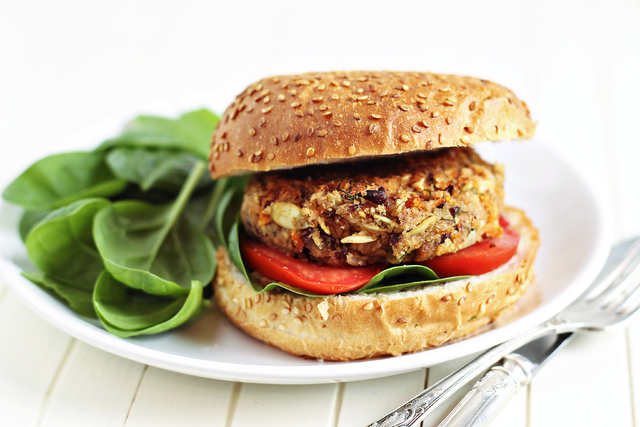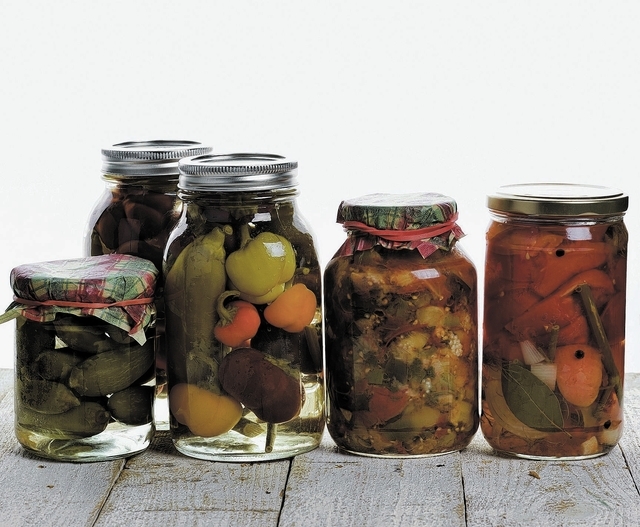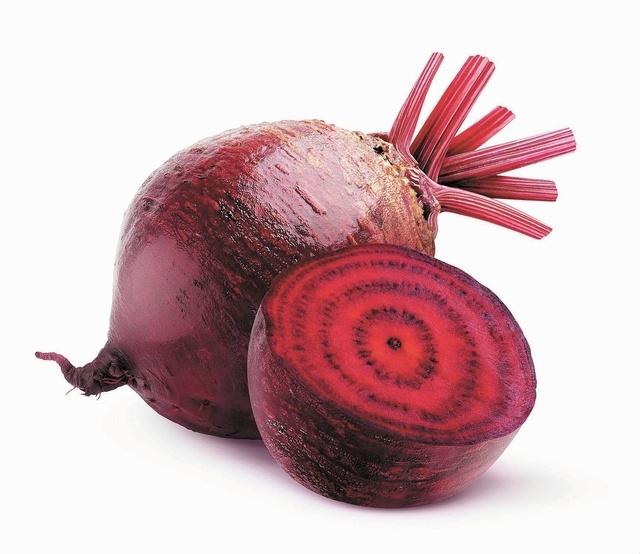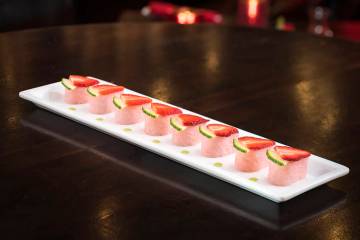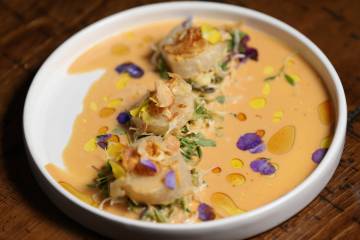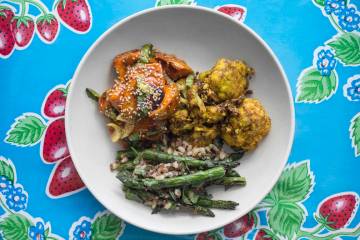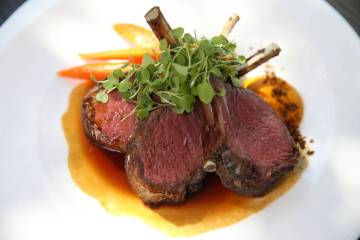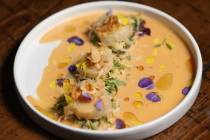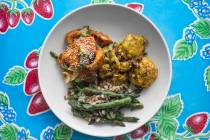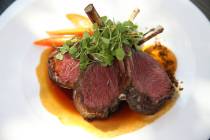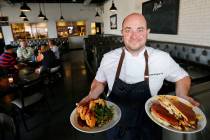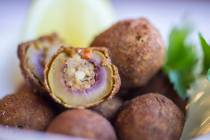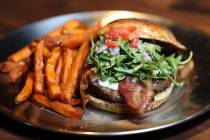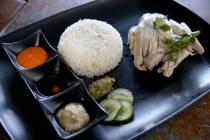Food predictions for 2014
Well, 2013 officially has trickled down the kitchen drain, which raises the question uppermost on the minds of foodies: What will we be eating in 2014?
To find out, we polled a bunch of local chefs and a couple of nutrition educators. What they saw in their crystal balls was varied, but there does seem to be one consistent thread: Maybe — just maybe — we’ll be eating a little more healthfully this year.
“I’ve been seeing a big trend going on with people definitely watching their weight,” said William DeMarco, executive chef of Crush at the MGM Grand and La Cave at Wynn Las Vegas. “And gluten-free is something I see a lot of.”
“People are really watching their weight and on gluten-restricted diets,” echoed Angelo Sosa, executive chef of Poppy Den at Tivoli Village. “People are more conscious than ever about health.”
Habits die hard, though, and as we tried to focus on eating healthfully last year, it seems we perpetuated a decades-long tendency to worship a single item.
“Obviously, this was the year of kale,” said Elizabeth Blau, restaurant developer and owner of Honey Salt.
“We already tried the pomegranate — which was a big discovery for America — and we discovered kale and we discovered quinoa,” added Sami Ladeki, owner of Sammy’s Woodfired Pizza and Sammy’s Restaurant, Bar &Grill.
The question is, what will be the next big thing?
“I’m sure that kale will continue to be a popular item because they found that they can do so much with it,” said Sue Lednicky, nutrition educator with University of Nevada Cooperative Extension.
“It just depends on what chef comes up with what new thing,” Lednicky added. “I’m waiting to see what the new wonderfood will be for 2014. I did see that turnips were one that’s becoming more interesting to people,” much as beets have in recent years.
“Now everything’s roasted beets,” Ladeki said. Joe Elevado, executive chef of Andrea’s at Encore, said there will be more attention to foods we consider homeopathic, “like beets for blood pressure.”
“I think people are looking to be more healthy, and I think they attribute it to nutrition and diet,” Elevado said.
Blau said she thinks greens will be big this year and that we’ll expand our appetites beyond kale to such things as mustard, turnips and collard greens.
“There’s a trend toward grains, beans, Meatless Mondays, expanding the diet to eat less meat,” Blau said.
Like Ladeki, she said quinoa has been a big item, with her restaurant serving a variety of types in a variety of dishes. But beyond quinoa, she said, she sees people eating more of grains such as spelt, barley, farro and black Chinese forbidden rice.
“Even wheat berries, which are nice and crunchy,” Blau said.
“We will see more and more grains like quinoa and farro,” said Mathieu Chartron, executive chef of Guy Savoy at Caesars Palace.
“We already started seeing a lot of ancient grains,” agreed Michael Van Staden, executive chef of Bacchanal Buffet at Caesars Palace. “That’s going to be a bigger trend for next year.”
Meatless — Mondays, Tuesdays or whenever — too.
“We have more and more guests ask for vegetarian dishes and dairy-free,” Chartron said.
“You’re going to see a lot more vegan dishes,” Von Staden predicted.
“I think veganism is taking over the country,” Sosa said. “I think there’s going to be a massive trend. From the chef’s perspective, vegetables are exciting, vegetables are sexy.
“Chefs are coming up with multiple ways to get excited about vegetables.”
Which is not to say meat eaters will be left out in the cold. While reporting an increase in customers looking for vegetarian and vegan dishes, Chartron at Guy Savoy said his foie gras remains hugely popular.
“People come here for the foie gras,” he said. “They cannot get it in California, so they come here for it.”
But we’ll be increasingly expanding our meat tastes as well, they said. Richard Camarota, chef of Sage and Five50 at Aria at CityCenter, said he sees a lot of interest in meats such as pork from small producers in upstate New York.
“They were bred from old … breeds they had back in Europe that weren’t based on quick grilling, they were based on great flavor,” Camarota said. “They’ve got a lot of fat on them, but it makes them delicious.”
“The heritage meats, genetic stock that predates all of the horrible commercial farming,” Blau said. “They have more fat, but I don’t think people should be afraid of that.”
“You’re going to see a lot of different meat cuts, especially cuts that people are not familiar with,” Von Staden said. “We started doing lamb belly, with a fava bean puree and pickled ramps. It’s not as salty as pork — a very nice, mild flavor.”
And speaking of pickled ramps: such items, produced in-house, reflect a greater interest in fresh produce, especially if it’s locally produced.
“Pickled vegetables,” Elevado said. “We’ve started doing a lot of our own poached fruits as well.”
“Very fresh, a lot of herbs,” said Ernesto Zendejas, executive chef of Chayo, which opens this week at The Linq. “We’re going to use a lot of guava. Huitlacoche — something new for Las Vegas.”
“We’re going back to basics,” said Matt Hurley, executive chef of Cut at the Palazzo. “Going back to find out where your products come from, where the produce is grown and how it’s grown, chefs getting more involved with that. Wolfgang (Puck) was doing it 30 years ago and now he’s having us do it, to know more about the products we’re using and giving that information back to our customers.”
“I really think that simple food is making a comeback,” Elevado agreed. “Natural foods, responsibly sourced foods — especially with this whole thing with GMOs going on. I think that’s going to be a big focus next year.”
Lorna DunnCrabb, a registered dietitian at University Medical Center, said she thinks technology will change the way we eat and shop next year, such as mobile apps that will enable us to place a grocery order at our local supermarket and pick it up at a drive-through window.
Some of the changes, she said, will come about because of regulation.
“We’re looking at a lot of labeling changes in the marketplace,” she said. “Companies that have put a lot of little things into their recipes are taking those out so they don’t have to have it on the label — little tiny ingredients that are either preservatives or food dyes. They’re dropping some of the colors so they don’t have to put them on the labels.”
And mobile apps will help further clarify products, she said, enabling consumers to scan a code on a label to obtain such information as origin.
“That’s going to be big this year,” she said; “where did your food come from? Did it come from Brazil, or did it come from California?”
Contact reporter Heidi Knapp Rinella at hrinella@reviewjournal.com or 702-383-0474.



